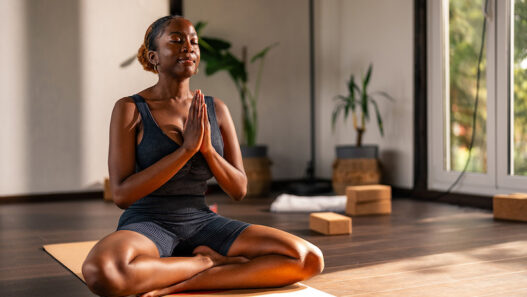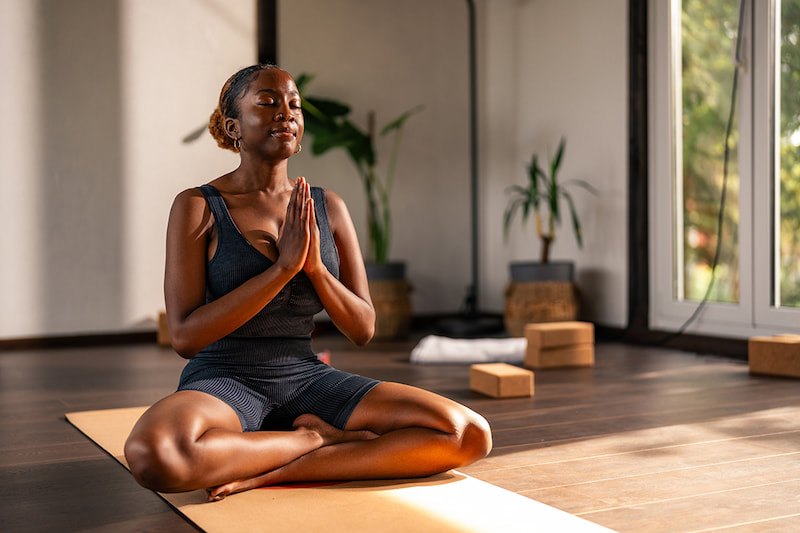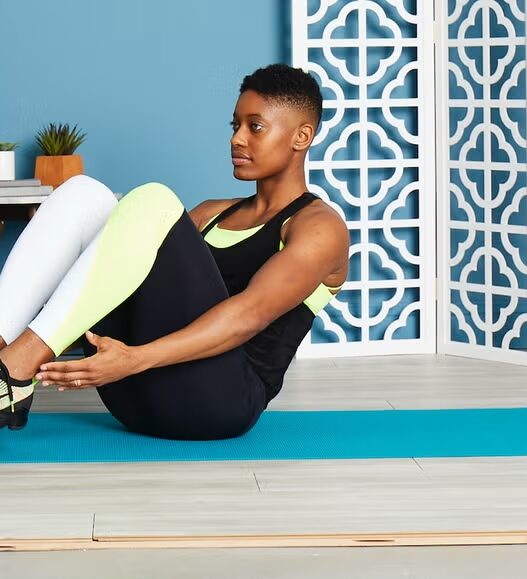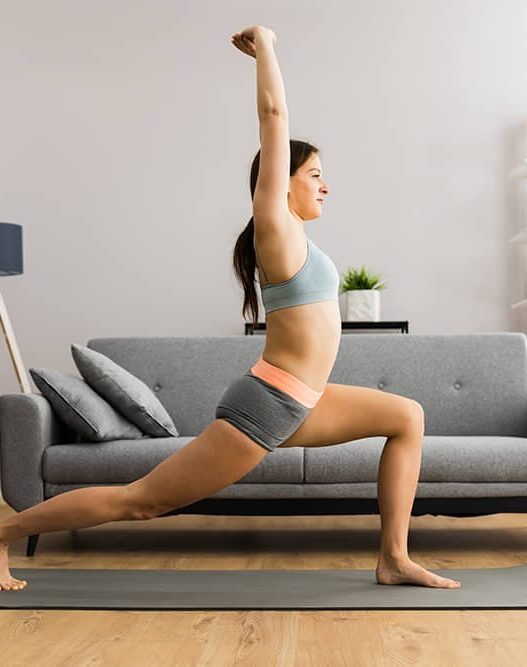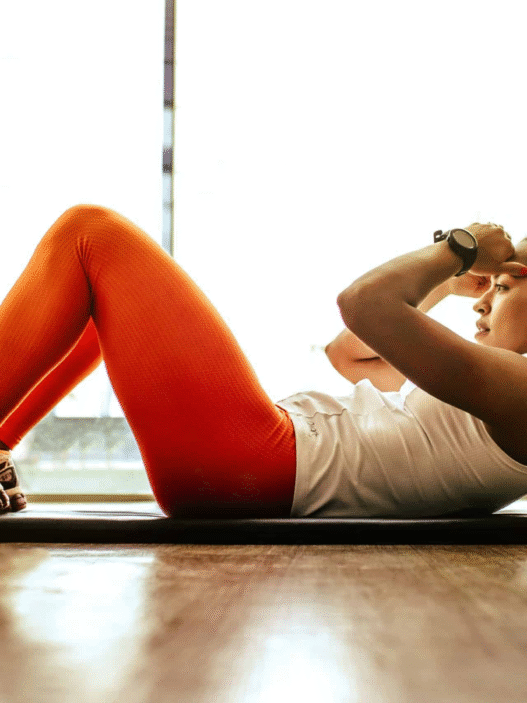Somatic workout uses pandiculation, This is an instinctive pattern where you gently contract and then release muscles.
Over time, because of stress, trauma, sports training, injuries, and daily habits, our nervous system may keep some muscles tight on purpose to protect us. That can lead to chronic pain, tightness, and soreness. Somatic movement helps you notice what you feel, then contract and relax muscles on purpose so they can let go.
What Is Somatic Stretching?
Sometimes the practice is very quiet. Meredith Sands Keator, director of training at Somatic Stretch in Ojai, California, says people may simply lie on the floor and learn to feel sensation. You do not pull forcefully or force large movements.
It can be as simple as letting your head hang and noticing your neck. Many people describe the result as a melting of long-held tension like your best morning stretch.
Sarah Warren, a clinical somatic educator in Massachusetts, explains that this response is built into our nervous system. Babies and animals do it when they arch, lengthen, and release. Imitating this allows us to assist our bodies in resetting.
Somatic Stretching Benefits
Studies on somatic techniques are still few. Many people who regularly exercise, nevertheless, claim to have better posture, flexibility, range of motion, and balance.
Furthermore, major fitness advice states that flexibility and mobility are essential components of a healthy regimen and can assist in lowering injury risk and promoting good aging.
Additionally developing mind-body awareness is somatic work. If anything seems wrong, you may react sooner by altering your gait, performing a mild somatic exercise, or consulting a medical expert.
It is noticing how your body feels. Because we can also retain mental tension in our muscles, some people also experience reduced stress.
Risks and Safety
When performed as directed, somatic stretching is usually mild and secure:
Listen to your body. Never force into pain or past comfort.
Before beginning, consult your doctor if you have an injury, medical problem, or disease.
Be mindful if you have a past of trauma including negative childhood experiences, usually known as ACEs. Somatic work could be upsetting but can also help you to reconnect with your body. Think about partnering with a trauma-informed specialist trained in mental health therapy.
The biggest risk is not hearing. Demanding too much might cause you to overlook the soothing, liberating impact.
Five Basic Somatic Stretches for Novices
Sarah Warren advises repeating each of these daily for five minutes. Take a slow stroll, inhale, and feel. Stop whenever anything feels off.
1) Standing knowledge
- Stand tall with your legs firmly grounded.
- Watch your feet touch the ground. Try gently tensing and relaxing the muscles in your feet.
- Breathe deeply. Allow your stomach to contract and relax.
- Head-to-toe scanning. Look for any small places.
2) Hang Your Head (for neck tension)
- Stand tall with firmly planted feet.
- Gradually let your head fall forward only as far as is comfortable.
- Examine how the movement impacts the muscles in your neck, shoulders, and upper back.

- Locate a taut region and just feel it.
- Recline into the posture and ask for some tension release.
3) Arch and flatten for abs and lower back
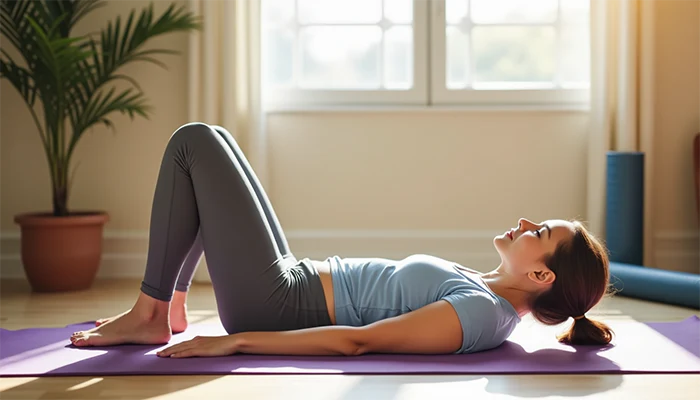
Played on the floor:
- With your feet wide at the hips and your knees bent, lie on your back.
- Inhale deeply. Pay attention to your abdominals and lower back.
- Gently arch your lower back, allow your stomach to swell, and press your glutes and feet onto the ground.
- Wait for a second before gradually flat your lower back into the floor.
- Repeat really slowly. Look over your torso often for stress and encourage it to release.

4) For deep hip tension, the iliopsoas workout
- Lie on your back. knees bent, feet on the floor.
- Put your right hand behind your head.
- Raise your right leg and head about 6 inches (knee bent). This appears to be a one-sided crunch.
- Look for tension in your lower back, hips, and legs.
- Leg and head lowered.
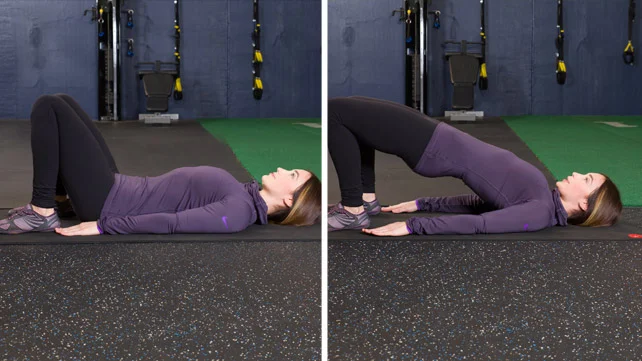
- Repeat, raising your leg slightly straighter this round.
5) Carpal tunnel sequence (for wrists, hands, and upper body)
Begin on your left:
- Lie on your left side with your legs bent at 90 degrees in front of you.
- Rest your head on your left arm.
- Place your right hand flat on the ground. Your upper arm should be resting on your body.
- Bend your elbow . It takes about a 90-degree angle.
- Lift your right arm up and around your head such that your right elbow points up and your right hand is near your left ear.
- With your right hand, gently tilt your head upward so the right side of your waist contracts (like a side crunch). Observe the contraction.
- Release and tilt your head very gently. Repeat once.
- Roll onto your back, with your right arm behind your head and your right elbow still elevated.
- Stretch your left arm to the side.
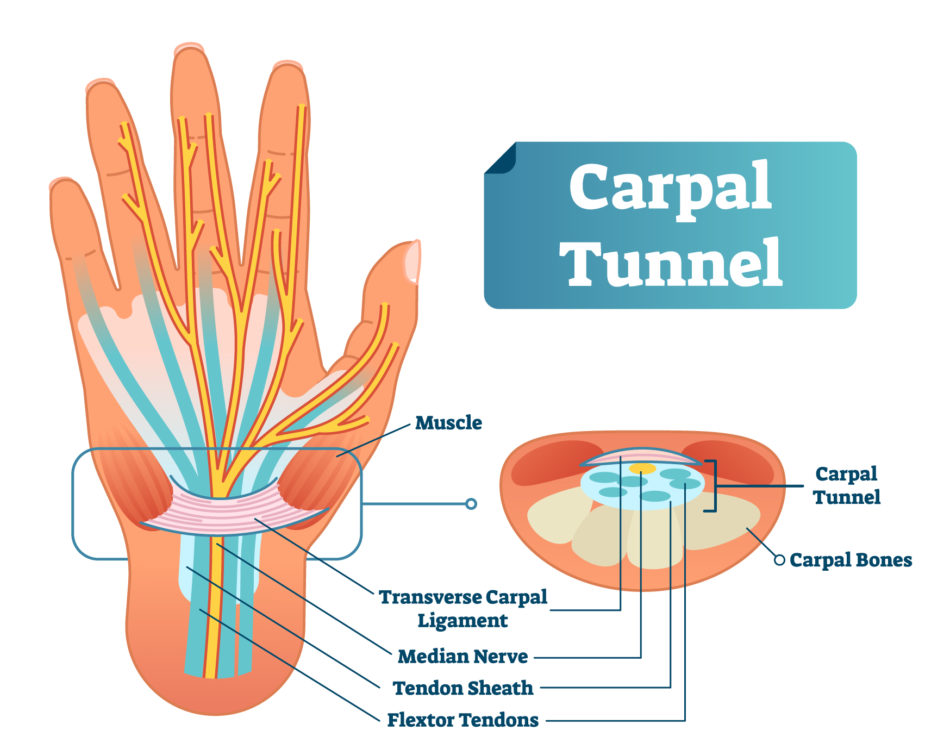
You can see Sarah Warren’s video of this sequence in action.
Additional somatic movement techniques to try
One facet of somatic movement is somatic stretching; other techniques include:
- Yoga
- Some dance styles—like Soul Motion and 5Rhythms
- Analysis of the Laban Movement
- Technique of Feldenkrais
- Approach for Trager
- Continuum Movement
Overview
Usually safe, somatic movement including somatic stretching can help many people feel looser, more relaxed, and more aware of their bodies. Although more study is required to discover best practices, many people claim increased mobility, balance, flexibility, and posture.
Speak with your doctor or physical therapist initially if you want to include somatic movement into your self-care, especially if you have any medical problems or injuries.
One final thought from Rachelle Tsachor: Somatic stretching is not a one-time exercise. It’s about resetting your motion every day long. Develop body awareness into your everyday activities. Pay attention to your body and select motions your body demands and feel well. That soft, deliberate attention can help release tension and promote long-term comfort over time.






